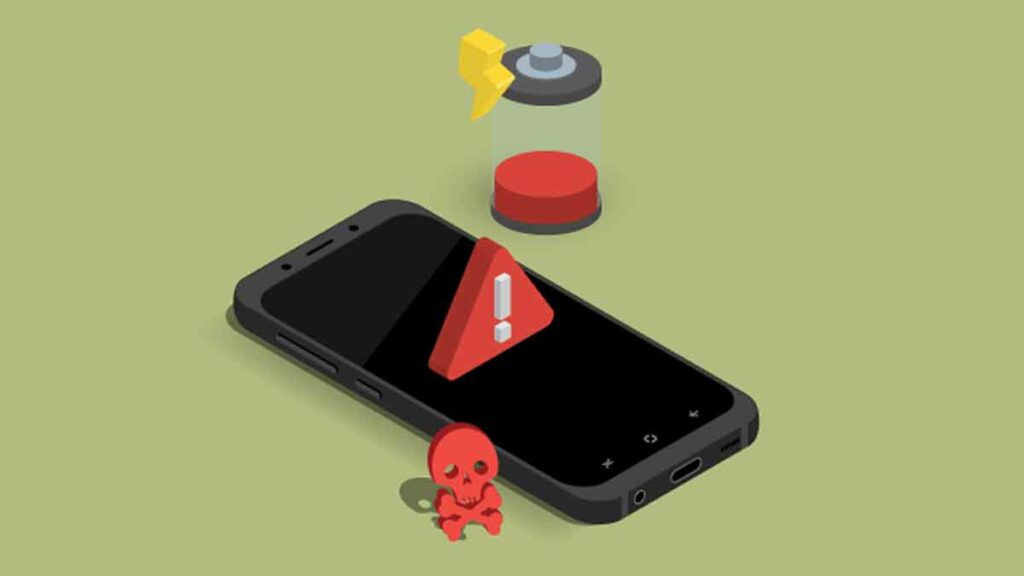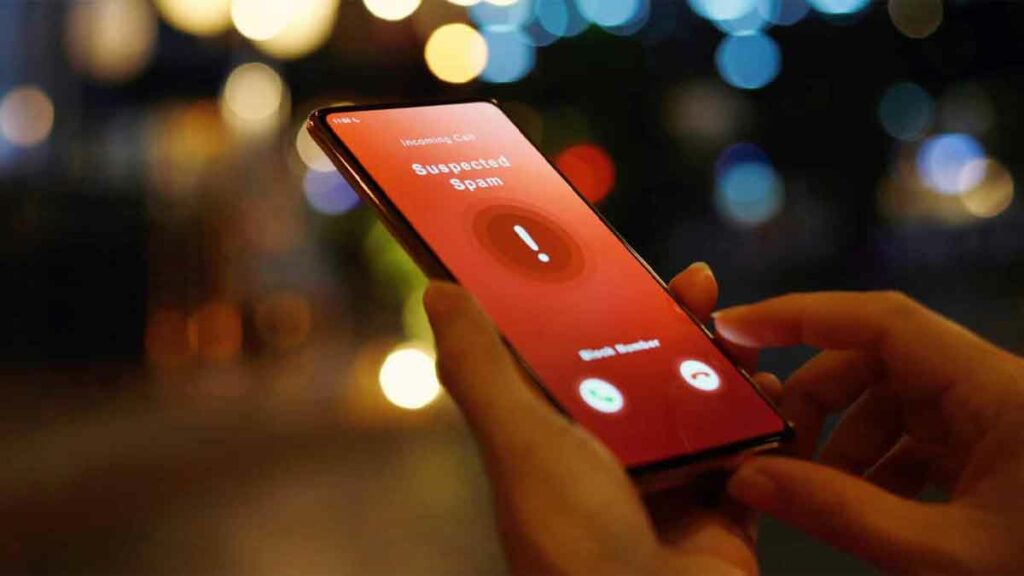Your phone can be hacked, much like some other device with web availability. Phones are especially tempting targets for hackers because these devices contain a massive amount of client information, from banking data to social media passwords.
Hackers are dependably anxious to infect your device with malware and trojans. By introducing keyloggers on your phone, a cybercriminal can monitor your movement and subtly view your login information for sites and applications. At times, they could transform hacked phones into crypto miners, creating cryptographic money for the hackers while dialing back device performance.
While your cell phone is massively helpful, it can seriously endanger you, which is the reason it means quite a bit to know how to detect signs of hacking.
Understanding Phone Hacking
Phone hacking is the act of acquiring unauthorized access to a cell phone or its communications. Hackers can utilize different strategies to hack a phone, including:
• Exploiting software vulnerabilities: Software vulnerabilities are weaknesses in software that can be taken advantage of by hackers to get to a device. Programmers can find and exploit programming weaknesses in the operating system, applications, or firmware.
• Tricking clients into uncovering individual data or introducing malware: Phishing is a typical strategy that hackers use to fool clients into uncovering individual data, for example, passwords or credit card numbers. Hackers can likewise send malicious links or connections in messages or that’s what text messages, when clicked, introduce malware on the client’s phone.
• Attacking phone networks: Hackers can also go after phone organizations to get close enough to phones. For example, they might have the option to block calls or text messages, or even track the area of a phone.
When a hacker has accessed a telephone, they can do various things, for example,
• Steal individual data: Hackers can take individual data put away on the phone, like contacts, photographs, messages, and monetary information.
• Spy on communications: Hackers can tune in on calls and text messages, and even track the phone’s area.
• Install malware: Hackers can introduce malware on the phone to take information, control the phone, or even spy on the client.
Signs Your Phone Has Been Hacked

Identifying if your phone has been hacked can be a challenge, as hackers frequently attempt to keep it secret. However, there are a few normal signs and unusual behaviors that might demonstrate your phone has been compromised. If you notice any of the accompanying signs, it’s critical to promptly take action:
1. Battery Drain: If your phone’s battery is unexpectedly draining a lot quicker than expected, it very well may be an indication of malware running behind the scenes.
2. Data Usage: Unexplained and critical information use can show unauthorized applications or cycles running on your phone, possibly because of a hack.
3. Slow Performance: A hacked phone might become sluggish or inert as malicious software consumes system assets.
4. High Information or Call Charges: Hackers can involve your phone for premium-rate calls or SMS, resulting in unusually high bills.
5. Unusual Pop-ups or Promotions: Frequent and meddling pop-up advertisements or warnings, particularly when you’re not using any applications, can recommend a malware disease.
6. Apps You Didn’t Install: Check your installed applications routinely. If you find new or suspicious applications that you didn’t introduce, they could be malicious.
7. Disabled Security Features: If your security settings, for example, antivirus software or firewalls, have been messed with and switched off without your consent, it’s a warning.
8. Unfamiliar Records or Emails: If you get notifications for new records or secret key reset messages that you didn’t start, somebody might be attempting to acquire unapproved access to your records.
9. Strange Messages or Texts: Getting unusual text messages or social media messages from your records can indicate that your records have been compromised.
10. Overheating: Excessive heat production, even when not using requesting applications, could demonstrate malicious cycles running in the background.
Common Hacking Methods

Here are probably the most well-known hacking procedures used today:
Phishing: Phishing is a kind of social engineering attack where hackers send deceitful messages or text messages that have all the earmarks of being from a genuine source, like a bank or government organization. The messages commonly contain a link or connection that, when clicked, will introduce malware on the victim’s device or take their data.
Malware: Malware is malicious software that can be used to hurt or debilitate a PC framework, take data, or spy on clients. Malware can be introduced on a gadget through different means, for example, phishing messages, malicious associations, or drive-by downloads.
Zero-day assaults: Zero-day assaults exploit weaknesses in software that are not yet known to the dealer. Hackers often use zero-day assaults to target high-profile targets, similar to states and associations.
Man-in-the-middle attacks: Man-in-the-middle attacks happen when a hacker blocks correspondence between two get-togethers and impersonates one of them.
Denial-of-service attacks: Denial-of-service attacks are intended to flood a site or server with traffic, making it inaccessible to legitimate clients.
How To Protect Your Phone From Hackers
Stay up with the latest. Software updates frequently incorporate security fixes that can fix known vulnerabilities.
Be cautious about what applications you introduce. Just introduce applications from trusted sources, for example, the authority application store for your phone’s operating system.
Be careful about what joins you click on. Try not to tap on joins in emails or text messages from unknown senders. If you’re not sure about whether a link is protected, drift over it to see the genuine URL.
Use a strong password for or a PIN lock. Set a strong password or PIN lock for your phone to prevent unapproved access.
Install a security application. A security application can assist with protecting your phone from malware and different dangers.
Know about phishing scams. Phishing tricks are attempts to fool you into revealing individual data, for example, your passwords or credit card numbers. Be dubious of any email or text message that requests individual data.
Try not to use public Wi-Fi without a VPN. Public Wi-Fi networks are frequently temperamental, and that suggests that hackers could undoubtedly catch your data. To use public Wi-Fi, use a VPN to encode your traffic.
Be careful about what data you share on the web. Try not to share individual data online so that you would have no desire to fall into some wrong hands. This incorporates your place of residence, telephone number, and social security number.
Securing Your Network from Hackers
Getting your network is fundamental to protecting your devices and information from unauthorized access and cyber threats. Here are some vital stages to get your organization:
Change Default Passwords: Change default passwords on switches, modems, and other organization devices to strong, interesting passwords to forestall simple access by hackers.
Use WPA3 Encryption: Guarantee your Wi-Fi network uses WPA3 encryption, which provides stronger security compared with older encryption principles like WPA2.
Strong Wi-Fi Passwords: Use strong, complex passwords for your Wi-Fi network that incorporate a mix of letters, numbers, and special characters. Try not to use effectively guessable passwords.
Firewall Protection: Empower and arrange firewalls on your switch and devices to channel approaching and active traffic, blocking possibly harmful associations.
Regular Firmware Updates: Stay up with the latest to fix known security vulnerabilities. Empower automatic updates if available.
Network Monitoring: Use network monitoring tools to watch out for network traffic for unusual activity that could demonstrate a break.
Disable WPS: Impair Wi-Fi Protected Setup (WPS) as it tends to be powerless against assaults. Instead, use WPA3 for secure associations.
Guest Network: If your router upholds it, set up a guest network with limited access to your essential organization to keep guest devices separate from your devices.
Mac Address Filtering: Implement MAC address sifting to allow just approved devices to interface with your organization. However, remember that MAC locations can be spoofed.
Strong Router Admin Password: Change the default admin password for your switch to major areas of strength for a strong, unique password to prevent unauthorized changes to your organization settings.
Regular Backups: Consistently back up your router’s setup settings in case you want to reestablish them after a security incident.
Two-Factor Authentication (2FA): Enable 2FA whenever the situation allows, particularly for getting to switch settings and significant organization accounts.
What to Do If Your Phone Is Hacked

If you think your phone has been hacked, the principal thing you should do is keep cool-headed. It is crucial to act quickly, but there is a compelling reason to blow up. The following are a couple of directions on what to do:
Change your passwords. Change the passwords for your online accounts in general, particularly those that you got to from your phone. This incorporates your email, bank accounts, social media accounts, and whatever other records contain sensitive data.
Check your phone for malware. Use a security application to really look at your phone for malware—a wide variety of security applications are available, both free and paid. Pick a reputable application from a trusted developer.
Factory reset your phone. If you find malware on your phone, or the other hand if you are still worried about your security, you might factory at any point reset your phone. This will delete every one of the information on your phone and restore it to its factory default settings.
Be careful about what joins you click on. Don’t tap on links in emails or text messages from unknown senders. If you’re uncertain about whether a connection is protected, drift over it to see the actual URL.
Be careful about what applications you install. Only install applications from trusted sources, for example, the official application store for your phone’s operating system.
Use a strong password or PIN lock. Set password or PIN lock for your phone to prevent unauthorized access.
Install a security application. A security application can assist with protecting your phone from malware and different dangers.
Data Recovery after a Phone Hack: What You Need to Know

Recovering information after a phone hack can be a difficult and sensitive interaction. If you suspect your phone has been hacked, here are some moves to take to relieve the harm and possibly recover your information:
Isolate Your Phone: Promptly separate your phone from the web by switching off Wi-Fi and mobile data. This will prevent further unapproved access and data theft.
Change Passwords: Change the passwords for all your online accounts, particularly those connected to delicate information or monetary data. This incorporates email, social media, online banking, and some other records.
Empower Two-Factor Authentication (2FA): Set up 2FA for every one of your records that helps it. This adds an extra layer of safety and makes it a lot harder for hackers to gain access.
Contact Your Service Provider: Connect with your mobile service provider co-op and educate them regarding the hack. They might have the option to assist you with getting your phone and examine the issue.
Factory Reset Your Phone: This is a drastic step, but it very well may be important to remove any malware or unapproved access. Make a point to back up your information first if possible. After the reset, just reinstall applications and restore information from known safe backups.
Examine for Malware: Introduce a reputable antivirus or antimalware application and run an intensive output of your device to distinguish and eliminate any malicious software.
Check for Unauthorized Access: Review your phone settings for any unusual permissions or dubious applications. Eliminate any applications that you didn’t install or don’t perceive.
Contact Authorities: If you accept your phone was hacked for illegal purposes, like data fraud or cyberbullying, contact your local law enforcement and report the incident.
Instructions to Secure Your Phone on the Go
Here are a few tips on how to secure your mobile on the go:
Keep your phone with you consistently. Try not to leave your phone unattended in public places, like restaurants, cafes, or airports.
Use a strong password or PIN lock. Set a strong password or PIN lock for your phone to prevent unauthorized access.
Empower two-factor authentication. Two-factor authentication adds a layer of safety to your phone by expecting you to enter a code from your phone in addition to your secret word while signing in to certain accounts.
Be careful about what applications you install. Just introduce applications from trusted sources, for example, the authority application store for your phone’s operating system.
Be careful about what joins you click on. Try not to tap on links in emails or text messages from unknown senders. If you’re not sure about whether a connection is protected, float over it to see the actual URL.
Try not to use public Wi-Fi without a VPN. Public Wi-Fi networks are frequently unstable, and that implies that hackers could easily catch your information. If you need to use public Wi-Fi, use a VPN to encode your traffic.
Know about your surroundings. While you’re using your phone out in the open, know about your surroundings and who is around you. Try not to involve your phone in regions where you’re probably going to be pickpocketed or mugged.
Protecting Children: Teaching Them about Phone Security

Begin early. Beginning to show kids phone security is rarely too soon. Indeed, even small kids can understand essential ideas like not tapping on joins from outsiders and keeping their phone passwords a secret.
Talk to them about the risks. Explain to your children why it’s essential to be cautious with their phones. Inform them about the risks of online predators, malware, and phishing scams.
Set rules. Establish clear rules for your children’s phone use. This might incorporate things like how long they can spend on their phones every day, what applications they are allowed to use, and what their identity is allowed to converse with.
Be a good example. Kids learn by watching the adults in their lives. Ensure you are practicing great phone security routines yourself.
FAQs
1. How do you have at least some idea when your phone has been tapped?
Odd sounds on calls: If you hear a high-pitched hum, pulsating static, clicking, or blaring, these could be signs that your calls are being recorded.
A decrease in battery timing: If your phone’s battery is depleting surprisingly fast, this could be a sign that it is being used to impart data to an outsider.
An expansion in information use: If you see a surprising extension in your information use, this could be a sign that your phone is being used to send and get data without your authorization.
Strange applications or reports appearing on your telephone: Assuming you find applications or records on your phone that you didn’t install, these could be malware that has been introduced by a hacker.
Your phone overheating: If your phone is overheating for some mysterious reason, this could be a sign that it is being used to run malicious programming.
Haphazardly turning off or rebooting: Assuming your telephone is haphazardly turning off or rebooting, this could be a sign that it is being controlled by a hacker.
Your phone overheating: If your phone is overheating for reasons unknown, this could be an indication that it is being used to run malicious software.
Randomly switching off or rebooting: If your phone is randomly switching off or rebooting, this could be an indication that it is being controlled by a hacker.
2. Will the phone be hacked through a call?
It is unlikely that your phone can be hacked through a regular call. However, hackers can use calls related to different strategies to hack your phone, for example, phishing or social engineering.
For example, a hacker could call you and profess to be from a real organization, for example, your bank or credit card organization. It is essential to be wary while getting calls from unknown numbers. If you are unsure whether a call is real, hang up and call the organization straightforwardly.
3. Could a phone be hacked through Bluetooth?
Programmers can exploit weaknesses in Bluetooth to obtain unauthorized access to a phone.
For example, a programmer could make a malicious Bluetooth contraption that is by all accounts a real device, similar to a headset or speaker. If you connect with the malicious device, the hacker could get adequately near your phone’s data and records, or even introduce malware on your phone.
To protect your phone from being hacked through Bluetooth, it is essential to associate with Bluetooth devices that you trust as it were. You should also handicap Bluetooth when you are not using it.
4. Can the phone be hacked via WhatsApp?
WhatsApp is by and large viewed as a safe informing stage, and it uses end-to-end encryption to protect the protection and security of your messages and calls. This implies that you and the individual you’re speaking with can read or hear what is sent, and no one in the middle between, including WhatsApp itself, can get to the content of your messages or calls.
However, similar to any technology, WhatsApp isn’t altogether invulnerable to hacking or security vulnerabilities.
5. Which phone can’t be hacked?
No phone that can’t be hacked. In any case, a few phones are safer than others. For example, phones that use encryption and have solid security features are hard to hack.
Here are the absolute most secure phones available:
- Pixel 6 Pro
- IPhone 13 Pro Max
- Samsung Galaxy S22 Ultra
- Fairphone 4
- Purism Librem 5
6. Which phones get hacked the most?
Android phones are generally bound to be hacked than iPhones. This is because Android phones are more popular and have a greater client base. Besides, Android phones are more divided, intending that there are a great many types of the Android operating system being used. This makes it more challenging for Google to deliver security updates to all Android users promptly.
Here is a list of the most hacked Android phones, as indicated by a study by Atlas VPN:
- Samsung Galaxy S22 Ultra
- Xiaomi Redmi Note 11 Pro
- Oppo Find X5 Pro
- Realme GT 2 Pro
- Vivo X80 Pro
These phones are well known and have a large client base, which makes them more attractive focuses for hackers. Also, these phones are frequently used by organizations and government offices, which might contain sensitive information that hackers are keen on taking.
7. Can you find out who hacked your phone?
It is possible to figure out who hacked your phone, but it is difficult. Hackers frequently use complex techniques to hide their characters, like using proxy servers and VPNs. However, there are a couple of things you can do to attempt to recognize the hacker:
Check your phone’s logs. Your phone’s logs might contain data about the hacker, for example, their IP address or the kind of device they used.
Use a security application. Some security applications can assist you with recognizing and removing malware from your telephone. They may also have the option to furnish you with data about the hacker.
Contact your carrier. Your carrier might have the option to furnish you with data about the hacker, for example, their phone number or area.
Contact the police. If you accept that your phone has been hacked, you can contact the police and document a report. They might have the option to explore the matter and attempt to identify the hacker.

